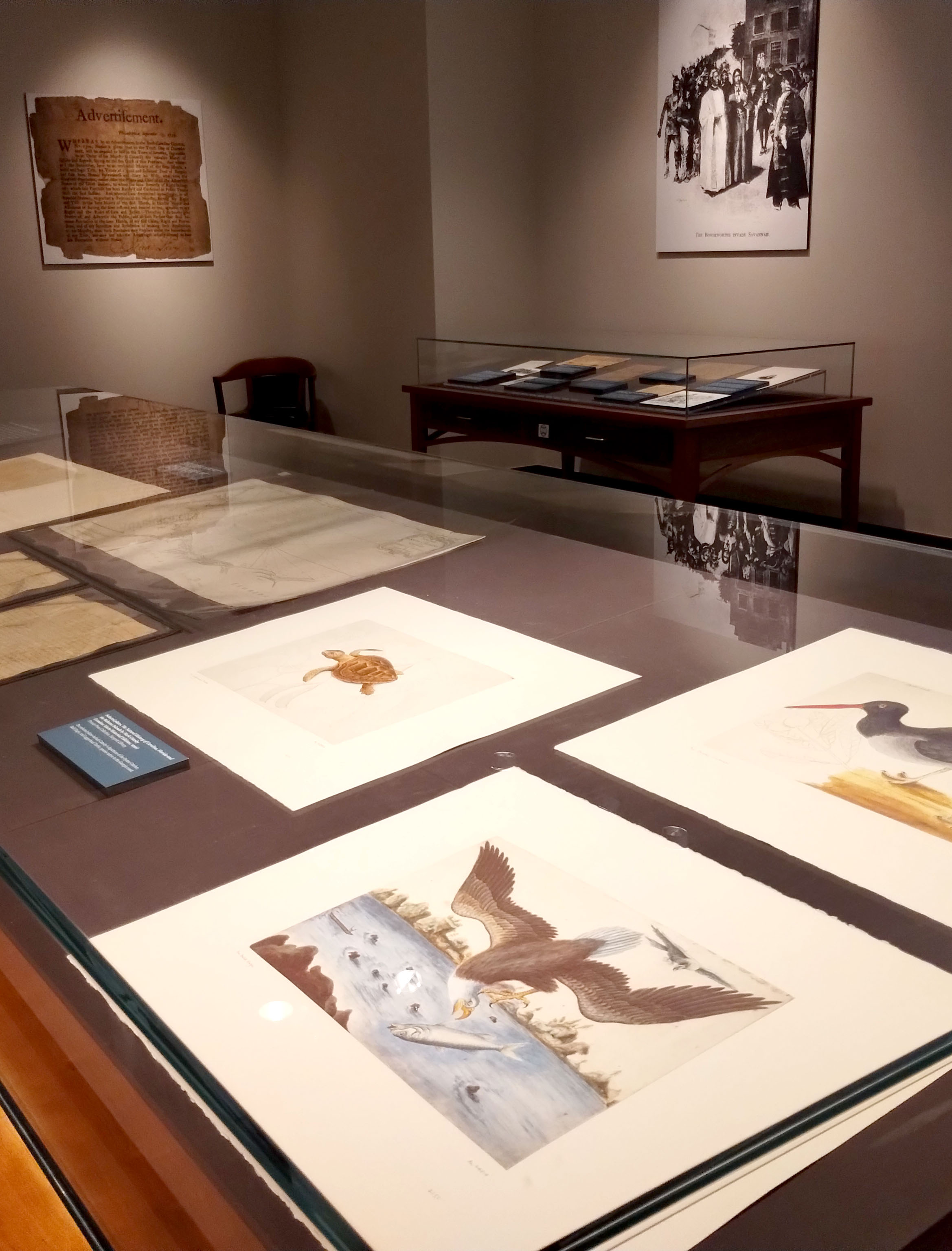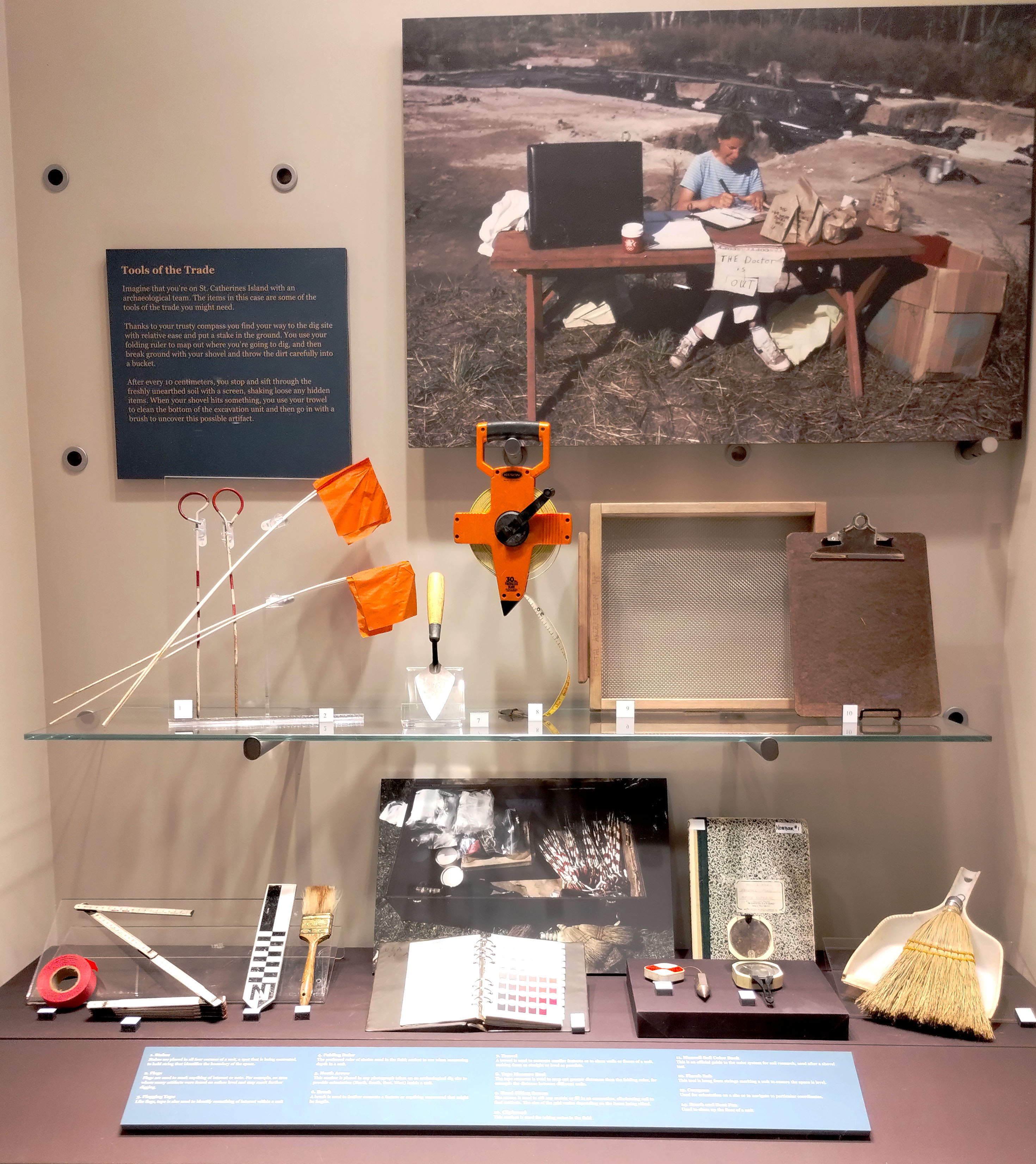
The archaeological secrets of one of Georgia’s most well-preserved coastal treasures is on display 250 miles away in the Hargrett Rare Book and Manuscript Library gallery at the University of Georgia Special Collections Building in Athens.
The exhibit Exploring St. Catherines Island lays out centuries of American history found in artifacts unearthed on the island archaeological preserve. The exhibit contains pieces of pottery, shell tools, and other relics from the island that date back to the 16th century and traces the island’s history from the establishment of indigenous towns through Spanish and English colonialism. It continues with more modern documentation such as photographs, newspapers, and memorabilia that describe that describe the island’s place as a refuge for formerly enslaved people in the wake of the Civil War and its 20th century identity as a site for the preservation of native and exotic animals.
Most of all, the exhibit explores the work of archaeologists, led by David Hurst Thomas of the American Museum of Natural History, since the 1970s to filter through the layers of sand and soil to uncover the lives of early coastal Georgians. This includes the lives of Ancestral Muskogean people, known historically as the Guale, who built towns on the island 500 years ago. The display also traces the historically significant land dispute of Mary Musgrove, known Coosaponakeesa among the Creek Indians, who battled the British Crown for ownership of the island in the 1700s.
“The small geography of St Catherines Island contains a trove of Georgia history,” said Jan Hebbard, exhibition coordinator for the Hargrett Rare Book and Manuscript Library, which drew upon its St. Catherines Island Archive Collection for the exhibit, as well as artifacts on loan from the UGA Archaeology Laboratory. “We are thankful for the work of Dr. Thomas and his colleagues with the American Museum of Natural History, who uncovered these pieces of history and to our collaborators at the Archaeology Lab for sharing the objects and their knowledge for the display.” A portion of the exhibit is dedicated to fieldwork itself, displaying the tools, hand-written logbooks, and other materials related to archaeological digs.

Next month, the Hargrett Library will host Thomas, a noted professor and scholar who discovered the site of the Franciscan mission Santa Catalina de Guale on St Catherines Island, to speak about his findings. The free lecture, entitled "Indigenous Georgian and Franciscan Survivance at Mission Santa Catalina de Guale, 1570-1680," will be held at 6 p.m. Thursday Sept. 14 in the auditorium of the Special Collections Building.

On Saturday, Sept. 30 from 1 to 4 p.m., the community is invited to a free family day event spotlighting the exhibit. Held in partnership with the UGA Archaeology Laboratory, the free event will include activities for children to dig through history.
In addition to working with UGA’s Archaeology Lab and other experts, portions of the exhibit were created in consultation with representatives of the Muscogee (Creek) Nation, the Seminole Tribe of Florida, the Seminole Nation of Oklahoma, and Thlopthlocco Tribal Town, descendants of the indigenous people who were forced to leave the land during the period of colonial settlement. This exhibit was made possible with support from the Stephen E. Draper Center and Archives for the Study of Water Law and Policy and the James W. Woodruff, Sr. Center for Natural History in Georgia.
The exhibit will remain on display through December 2023. The galleries at the Special Collections Libraries, located on the University of Georgia campus in Athens, are open to visitors for free from 8 a.m. to 5 p.m. weekdays, with extended evening hours until 7 p.m. on Tuesdays and Thursdays. For more information or to schedule a tour, visit libs.uga.edu/scl.
